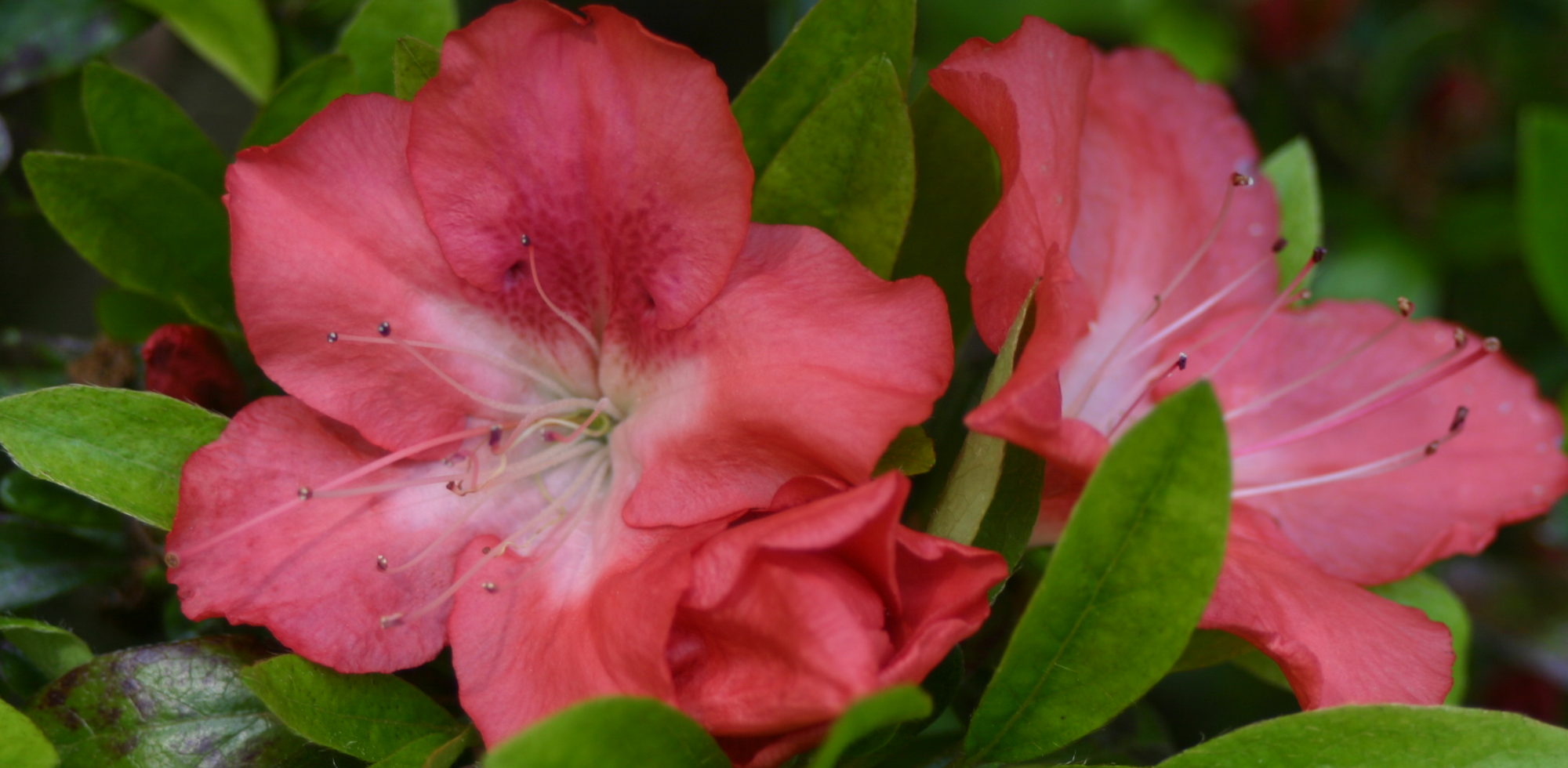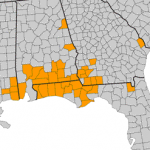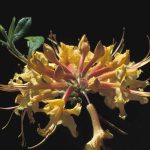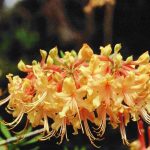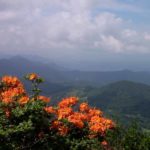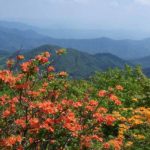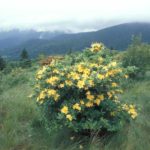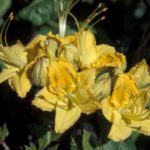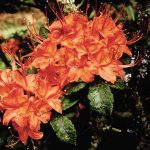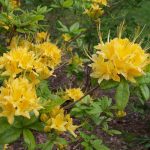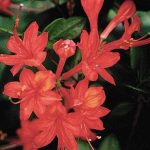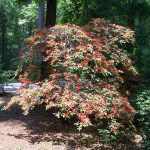The “Orange to Red Group” includes five species whose flowers can range from yellow, through gold, to deep orange or scarlet: R. austrinum, R. calendulaceum, R. cumberlandense, R. flammeum, and R. prunifolium.

Rhododendron austrinum is known as the Florida Azalea and blooms in early spring before as the leaves are beginning to expand. The fragrant blossoms come in shades of orange through gold and yellow, and measure approximately 1 to 1.5 inches across. This species has very long stamens and the tube of the flower is often flushed with red but there is no blotch.
Discovered by Dr. A. W. Chapman before 1865, R. austrinum is similar in many respects to R. canescens including the sticky glandular hairs on the flower tube, but differs in the color variations which are orange to yellow rather than pink to white.
R. austrinum makes an excellent landscape plant as well as a valuable hybridizing resource, especially in southern gardens where heat tolerance is important.


Rhododendron calendulaceum, also known as the Flame Azalea, is surely one of the most spectacular native shrubs of the Appalachian Mountains. The flowers are larger than most of the natives, measuring from 1.5 to 2.5 inches across, and come in a wide range of colors from clear yellow, through shades of orange, to brilliant red.First collected by A. Michaux in 1795 from the Blue Ridge Mountains of North Carolina, this species has a wide range of distribution from southern New York, Pennsylvania and Ohio as a northern limit, southward through the Appalachian mountains to northern Georgia. In late May and June, entire hillsides can be washed with brilliant color as these magnificent azaleas come into bloom.
R. calendulaceum is difficult to propagate by cuttings, but is easily raised from seed. Please leave the plants in the wild for others to enjoy, and purchase blooming-sized seedlings from specialty nurseries for garden use since young plants establish easlily in the garden. R. calendulaceum is a naturally occurring tetraploid, having twice the number of chromosomes in comparison to the other native species. Because of this fact, it does not hybridize easily with most of the other natives and even if a first generation cross is made, the resulting hybrids are often sterile.


Rhododendron cumberlandense (synonymous with R. bakeri ) is commonly known as the Cumberland Azalea. It has a relatively isolated natural range on the Cumberland Plateau in Kentucky south to Tennessee and the mountains of Georgia, Alabama, and North Carolina. The flowers are not large, about 1.5 to 1.75 inches across, and typically range from yellowish-orange to deep red. This species is sometimes difficult to distinguish from the larger flowered R. calendulaceum, but the blossoms generally appear several weeks later after the leaves have fully expanded and the undersides of the leaves are usually waxy white or bluish in color.
The species distinction for R. cumberlandense was first described by Lemon and McKay in 1937. This native azalea makes an excellent landscape plant in its own right, but it also hybridizes easily with many of the other species, producing beautiful hybrids in a broad range of colors. Many of the brightly colored forms in the hybrid swarm of native azaleas on Gregory Bald probably contain R. cumberlandense genes.

Rhododendron flammeum (synonymous with R. speciosum) is a southern native azalea commonly referred to as the Oconee Azalea. Its blossoms are approximately 1.2 to to 1.8 inches across and come is shades of yellowish orange, through orange to deep red. This species can be distinguished from the earlier blooming R. austrinum in that the flowers usually have a blotch, they are not fragrant, nor do they have sticky glandular hairs on the corolla tube.
Exact date of discovery for R. flammeum is not known, but plants of this species were first described by Aiton at Kew Gardens in 1789 and were probably sent there by William Bartram prior to that date. This species is a heat tolerant shrub of the Piedmont region of Georgia and South Carolina, and holds much breeding potential where hot summer stress is a problem.

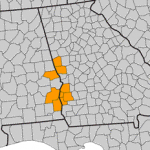
Rhododendron prunifolium, the Plum Leaf Azalea, is one of the latest native azaleas to bloom. The orange to vivid red flowers open in late summer and measure 1.5 to nearly 2 inches across. Flower buds for the next season are usually formed before the current season's blossoms open.
First collected by R.M. Harper in 1913, R. prunifolium has a very small natural distribution in southwestern Georgia and eastern Alabama. There are a number of nurseries that carry this excellent native azalea since it propagates readily by seeds or cuttings. Plants should be grown with afternoon shade to prolong the flowers during hot summer months. The author of this website has also painted a watercolor of Rhododendron prunifolium to accompany his study of this wonderful native azalea.
